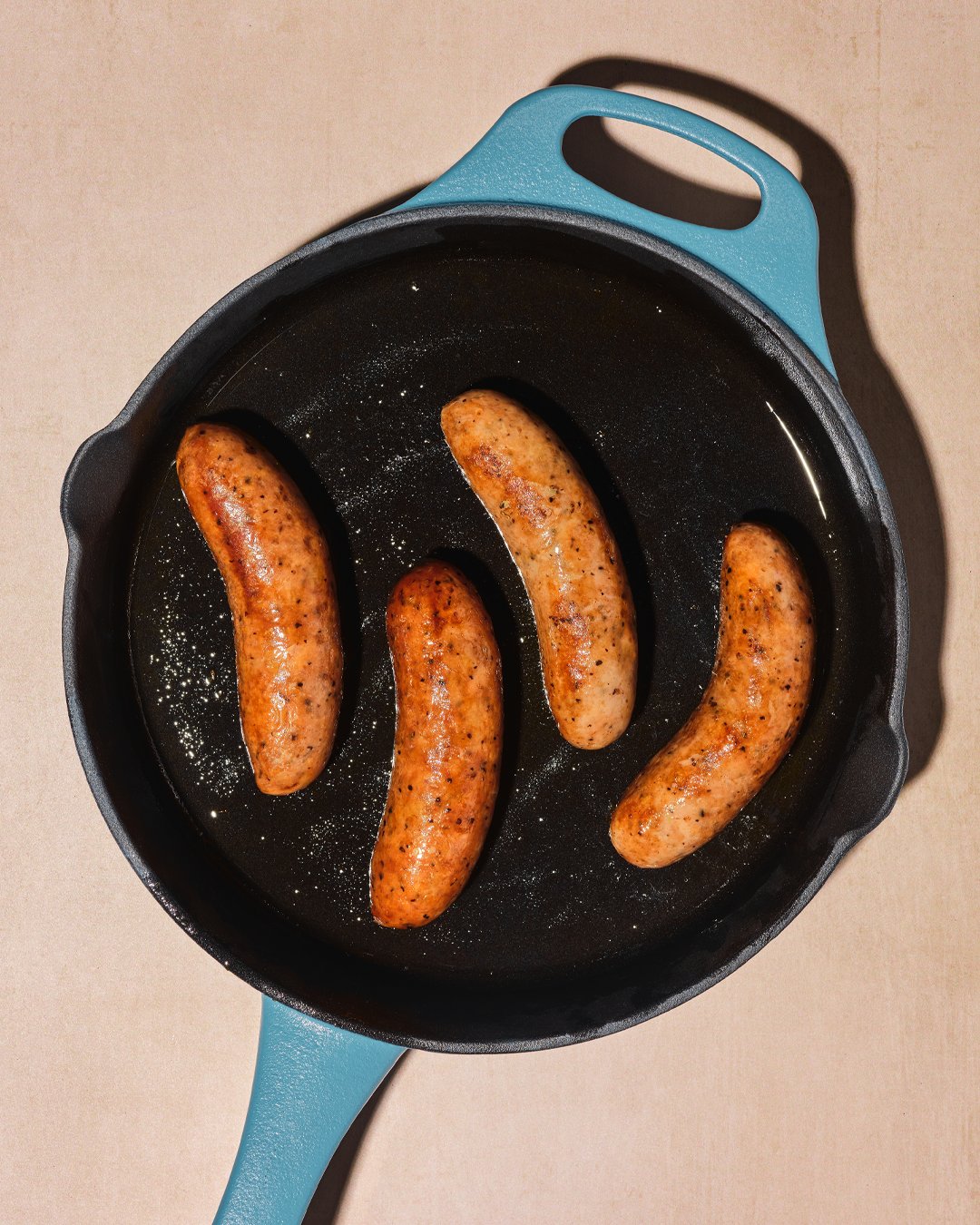
Cast-iron pans are the durable, versatile superheroes of most kitchens. We love them for their ability to create an even sear on foods—especially proteins like chicken sausage. When used properly, they can achieve nearly the same char as an outdoor grill without the smoke. But even superheroes have their weaknesses, and cast iron has two main adversaries: moisture and neglect.
Newbies often approach these rugged pans with the assumption that one wrong move means instant rust. The truth? Cleaning and maintaining cast iron isn’t nearly as tough as you think. Here’s a step-by-step guide to cleaning your cast-iron pan without losing your cool—or your seasoning.
1. Rinse with Hot Water
Rinse your pan under hot running water. Avoid using cold water on a hot pan: cast iron is indeed super strong, but it can definitely crack. Hot water also helps loosen stuck-on food, which means less scrubbing later.
2. Choose the Right Scrubber
Opt for a non-abrasive scrubber. There are plenty of options out there. A stiff-bristled brush is tough on gunk but gentle on seasoning. While you should avoid steel wool unless you're deep-cleaning, many non-scratch scrub pads are designed specifically for cast iron. And a chainmail scrubber is at once highly effective and gentle, with the added benefit of sounding like it came from a Renaissance Faire.
3. Add Some Salt
For stubborn stuck-on bits, sprinkle coarse kosher salt on the pan and use it as a natural abrasive. It helps scrub without damaging the pan’s seasoning.
4. Wash with Soap (Only if Necessary)
Typically, soap is a no-go for cast iron. However, a small amount of mild dish soap can be used occasionally if your pan has absorbed strong odors or flavors. Don’t overdo it, though—a quick wash is all you need.
5. Rinse Thoroughly
After scrubbing, rinse your pan again with warm water. Make sure all food, salt, and soap are gone—leftover residue can affect flavor later on.
6. Dry It Immediately
Use a clean towel to dry your pan right away, because cast iron really does rust fast if left damp. For extra insurance, heat the pan over a low burner to evaporate any lingering moisture.
7. Re-season Your Pan
After cleaning, it’s a good idea to re-season your pan so it doesn't lose its non-stick properties. To do that, first use a paper towel to rub a thin layer of oil (like vegetable, flaxseed, or shortening) over the inside and outside of the pan. Next, bake the pan upside down in a 450–500°F oven for one hour, using a sheet pan underneath to catch drips. Finally, turn off the oven and let the pan cool inside to help the seasoning set.
8. Store It Properly
Always keep your cast iron in a dry place. If you’re stacking it with other pans, slip a paper towel between them to absorb moisture and protect the surface.
9. No Soaking Allowed
Never soak your cast-iron pan in water. Ever. It needs a quick rinse, not a bath. Soaking is a one-way ticket to a rusty pant. Shower it and move on.
10. No Dishwashers, Either
Your dishwasher’s high heat and moisture can ruin the seasoning and invite rust, so pretty please just stick to hand-washing. Always.
11. Use Your Pan Regularly
Frequent use helps maintain your pan’s seasoning. The more you cook with it, the better it gets. Frying or sautéing with a bit of oil will help to build and maintain that non-stick surface, too.
12. Tackle Stains Gently
For minor stains, mix baking soda with water and scrub gently. If rust develops, you can use fine steel wool sparingly—just don’t forget to re-season afterward.
By treating your pan with care, you’ll ensure it remains a reliable companion in your culinary adventures for years to come.